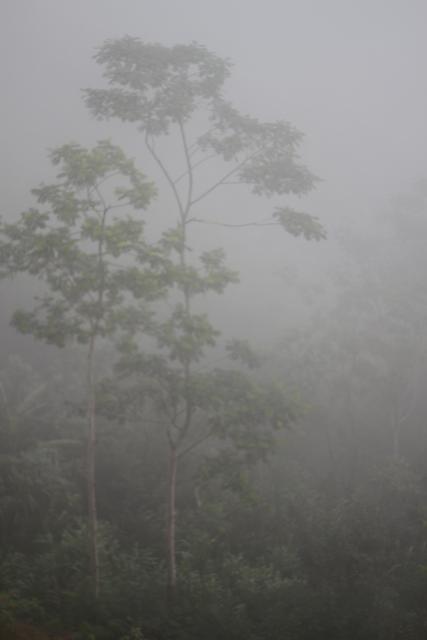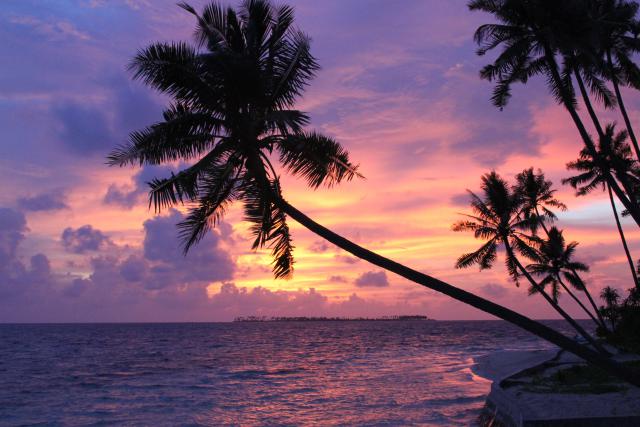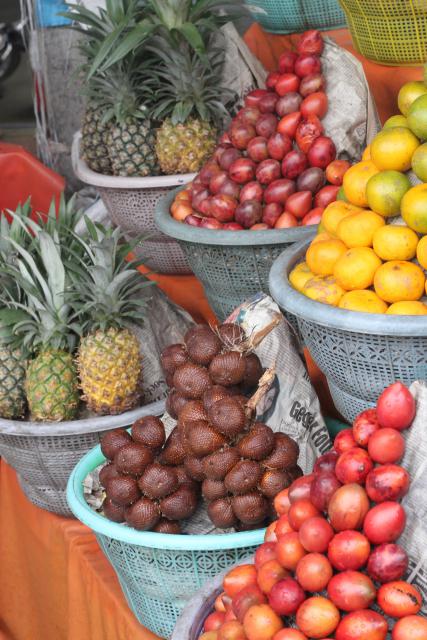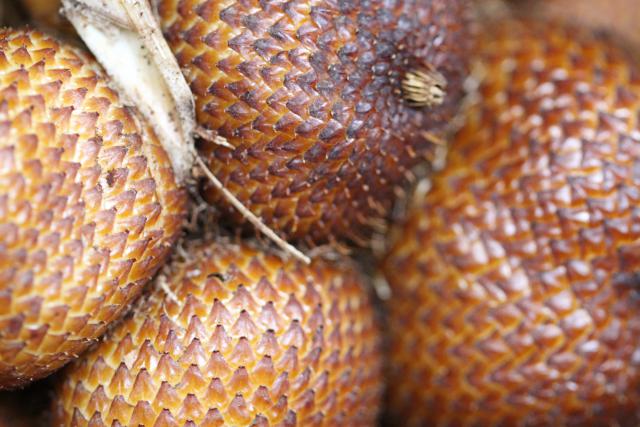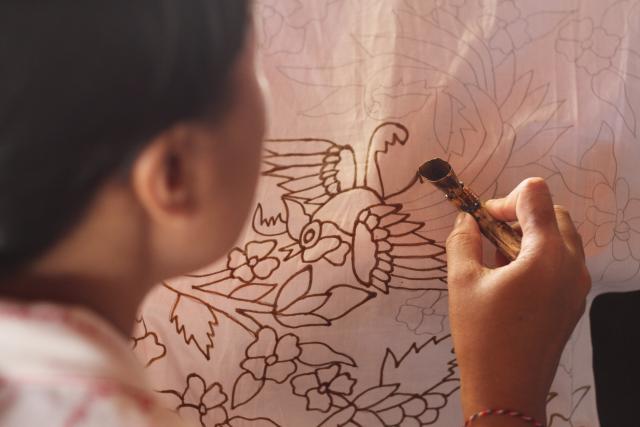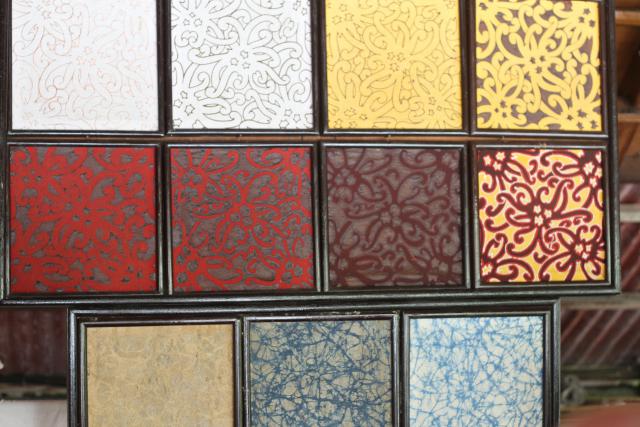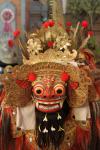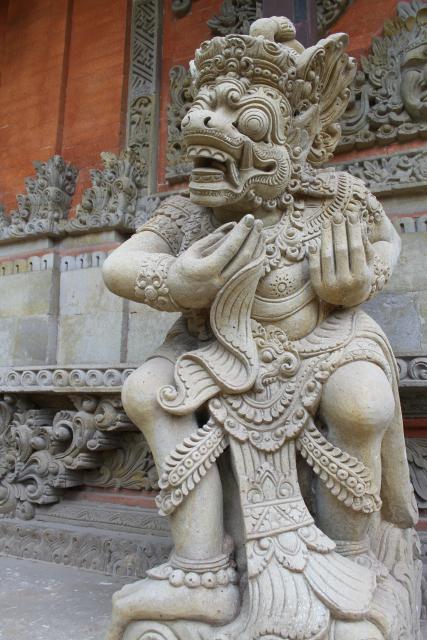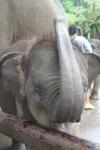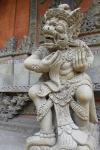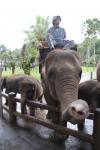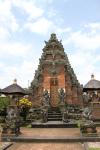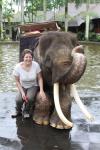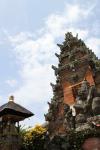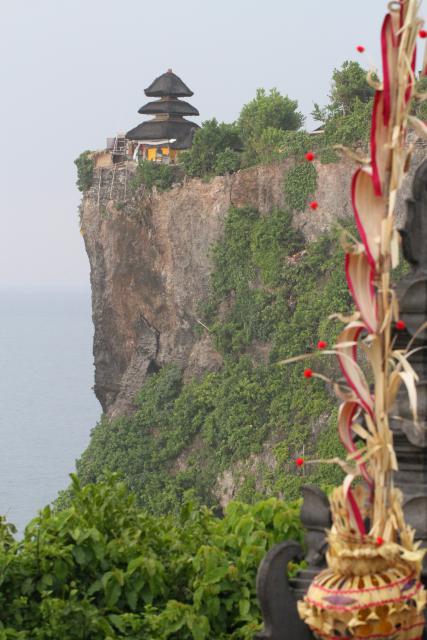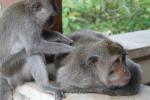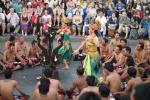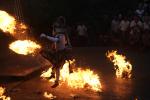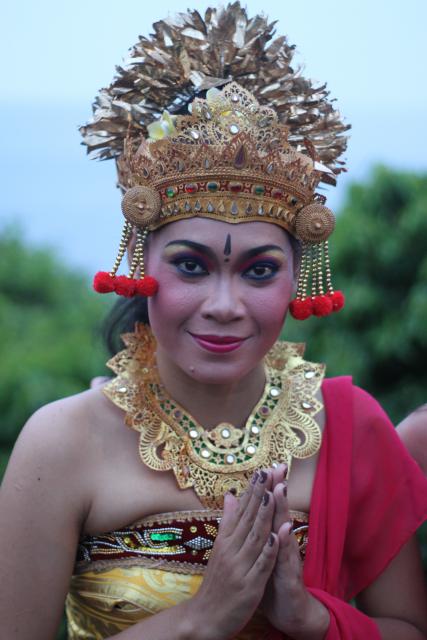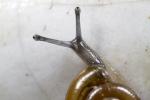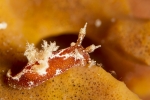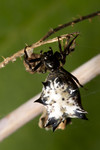travel
California Trip: Hearst Castle
ktuli — Tue, 09/04/2012 - 19:57
Continuing along on our recent California trip (yes, I am posting in order now), we made a visit to Hearst Castle. I'm not going to go too in-depth as to what exactly Hearst Castle is all about, but suffice to say it is the result of someone (William Randolph Hearst) with ridiculous amounts of money and a bit of craziness... The place is pretty well over the top in terms of lavishness for even today's standards, and was started back in the 1920's.
As I usually do in situations like this (where crowds of people make it rather difficult to take photos of the larger setting), I tended to focus in on details and tried to eliminate random people in my photos. Add to that, any time we were inside, the conditions were dim and poorly lit with incandescent lighting, and then outside was a harsh mid-day light that made the contrast very stark.
I'm just going to give a nice little mega-set today to get through all of these photos in one posting. Enjoy...
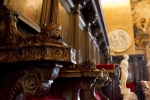 |
 |
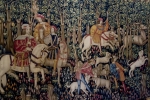 |
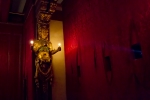 |
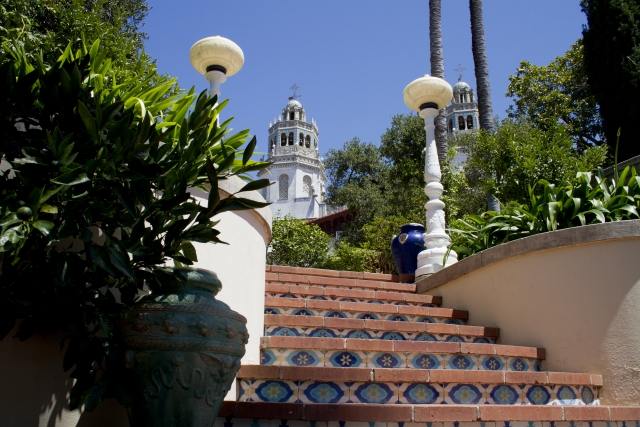 |
|||
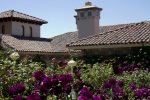 |
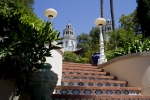 |
 |
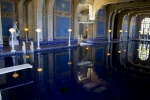 |
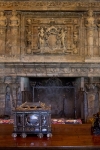 |
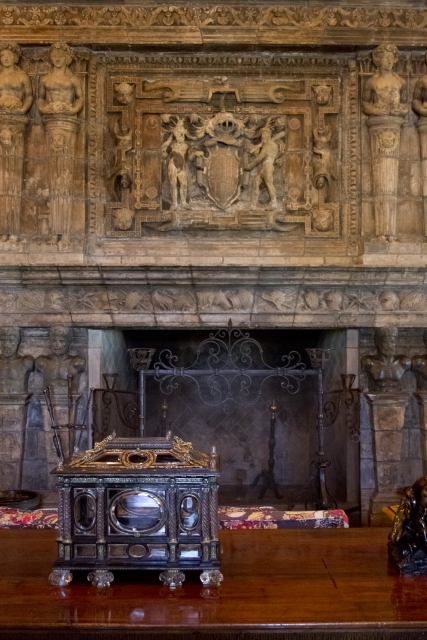 |
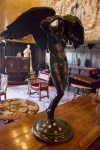 |
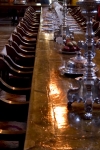 |
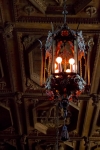 |
|
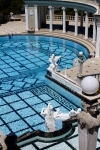 |
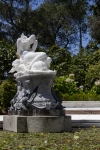 |
The trip is far from over, so be sure to stop back again tomorrow. We go back to some marine mammal photos...
- Bill
Poll: St. Kitts Saman Tree Compositions
ktuli — Sat, 12/03/2011 - 20:38
When we go on dive trips, our group always makes sure to spend some time top-side exploring the exotic places that we visit. In St. Kitts, we visited a batik factory (yes, like the one we visited in Bali) located on the grounds of Romney Manor that was once owned by the great great great grandfather of Thomas Jefferson.
On the grounds is a Saman Tree (Albizia saman). This tree is absolutely incredible... it is over 350 years old, 24 feet across at the base of the trunk, and the branches span over half an acre.
So obviously, it presented some challenges for getting a good composition that worked well to capture it. In all honesty, I should have put Anya in the frame near the base of the tree as a point of reference. Additionally, the late afternoon (almost 4PM) tropical light certainly presented some exposure issues (between a bright sky and dark branches and shared area under the tree).
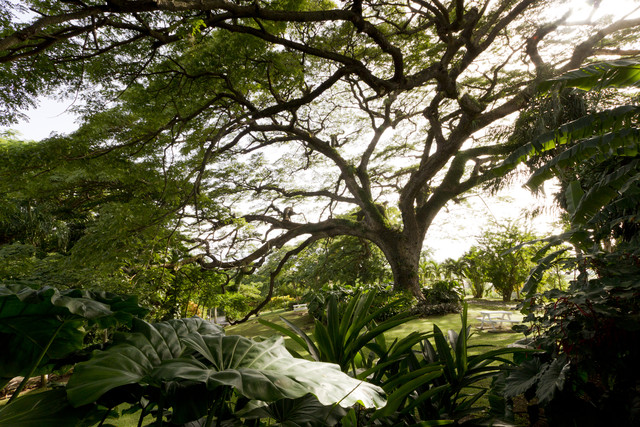 |
|
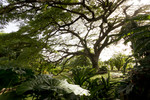 Wider Composition, 1/120 sec at f/11 |
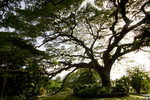 Tighter Composition, 1/200 sec at f/11 |
Technical Data: Canon EOS 7D, Sigma 10-20mm f/4-5.6 EX DC HSM AF at 10mm, 1/120 and 1/200 sec respectively at f/11. ISO 400. Raw conversion in Photoshop CS5. Romney Manor, St. Kitts.
Usual drill here - mouse over the thumbnails for the larger view, then place your vote and leave a comment letting me know why you chose what you did.
- Bill
Bali: Trees in the Clouds
ktuli — Sat, 04/02/2011 - 20:31
It was the rainy season while we were in Bali, and as such, it rained at least once every day.
In particular, on our second day there, we made a trip up to see one of the major volcanoes on the island (sorry - I can't remember the name). We seemed to have good luck with the rain only hitting overnight or while we were in the van driving to/from our destinations.
However, in this particular case, the rain produces a large amount of mist/fog that just blanketed the whole area. We had driven up a neighboring peak so that we could enjoy a lunch with a scenic vista of the volcano right across thre way, but were presented with nothing but a featureless white cloud.
As we finished eating, I watched the fog shift and pulse as it started to lift slightly. We spent a while on the overlook catching glimpses of the volcano. At one point, these trees appeared through the fog. I instantly thought it looked like something I would see in a National Geographic magazine or a BBC Wildlife special.
I quickly composed the shot, and fired off one frame, and just as quickly as they appeared, the trees were gone.
Technical Data: Canon EOS 7D, Canon EF 50mm f/1.8 II, 1/660th sec at f/1.8, ISO 100 (auto). No post production
- Bill
Wakatobi: Sunsets
ktuli — Wed, 03/02/2011 - 21:41
I've been having some motivation issues with getting new posts written, so today I'm just dropping by to post a couple nice sunset photos. Enjoy.
Technical Data: Canon EOS 7D, Canon EF-S 18-55mm f/3.5-5.6 II at 18mm, 1/32 sec at f/8. ISO 320. No post production.
Technical Data: Canon EOS 7D, Canon EF-S 18-55mm f/3.5-5.6 II at 28mm, 1/32 sec at f/11.3. ISO 3200. No post production.
Hopefully I get my motivation back soon and can get back to posting regularly.
- Bill
Bali: Foods
ktuli — Tue, 02/22/2011 - 17:34
So the food in Bali and Wakatobi was fantastic. So I'll share a little bit about that today...
First, on the top left is fried noodles and chicken satay. The fried noodles became a staple for me, as I really loved the flavor and it seemed to be available for breakfast, lunch, and dinner. The chicken satay was a grilled chicken with a peanut sauce. At this particular restaurant, the grilling was finished at the table on a small charcoal grill that they brought to the table - it worked great to keep the chicken warm throughout the whole meal. Almost all of our food was great in Bali (except for when we tried anything semi-American style), and the food in Wakatobi was fabulous every day!
The other major thing was all the fresh fruit we got. I have fresh pineapple, watermelon, honeydew, and other "regular" fruits. There was also several fruits I've never seen before. The second photo on the left is rambutan or hairy fruit. The red "hairy" outer shell would be cut away to reveal a white fleshy, sweet fruit surrounding a large seed inside. To be honest, we also called it "eye-ball fruit" as it had that tendency to look like eyes!
Additionally, in the top photo on the right, you can see a brown fruit in the middle basket on the bottom row. This is salak or snake-skin fruit. This fruit would be peeled and would reveal a kind of fruit with cloves similar to a bulb of garlic, and the flavor and texture was something between an apple and a pear. Very good. Below the vertical shots is a close-up of the snake-skin fruit.
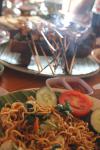 |
|
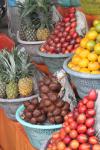 |
 |
 |
|
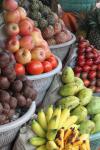 |
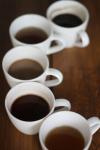 |
|
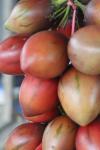 |
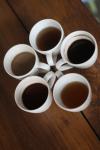 |
We also visited a farm of sorts. This farm was more of a tourist farm where they would grow a huge variety of the things often grown in Bali, so it had a path through a bit of "jungle" with various plants growing. One thing they had and specialized in was coffee. They had several different kinds of coffee there that they would grow and roast on site. One in particular is Luwak coffee - which is widely considered the most expensive coffee in the world (though, for the life of me, I can't figure out why someone would pay extra for that!).
Anyway, the farm owners sold the various teas and coffees they grew there (yes, including luwak), and offered free samples. When they brought us little trays with small cups with the various flavors to try, I don't drink coffee, and I didn't care much for the teas (I must be spoiled with all my sweet fruity flavored teas I drink at home). So,I decided to get a little creative with my photography and arranged the cups in various ways and played with different depths of field to see what kind of artistic shots I could achieve.
I had done a little playing with the depth of field with the fruit shots as well, but found that the deeper depths of field worked best with those to show all the various fruits and their textures in a single shot. At first glance I took the fruit shots for the mix of colors, then decided that the textures were just as important!
Above is the close-up of the texture of the snake-skin fruits.
I miss all the fantastic fresh fruits and juices we got while in Bali and Indonesia.
- Bill
Bali: Batik
ktuli — Sun, 02/20/2011 - 19:56
Well, I don't know if anyone else is tired of the dive photos yet. I'm certainly not, but I figured I'd switch things up a little and bounce back to Bali for a couple posts to give others a break just in case.
One of the things we did on our second day in Bali was to visit some of the crafts areas. Bali is well known for wood and stone carving, silversmiths, and for a type of fabric called batik. I didn't take too many photos this day, but I did take this one of a woman making batik fabric, and really love it.
Technical Data: Canon EOS 7D, Canon EF 50mm f/1.8 II, 1/60th sec at f/2.8, ISO 500 (auto). No post production
What Works: The composition is strong with the woman's head taking up a third of the shot and her hand resting on one of the other thirds. The balance given to the photo by the darkened drawing offsetting the lighter area of the photo. But really, what makes this photo nice is the shallow depth of field produced by the relatively wide aperture of f/2.8.
What Doesn't Work: Honestly, I find it a bit tough to find anything wrong with this photo. The dark shape in the bottom right is a tad distracting, but really - that seems like nitpicking.
Anyway, I guess I could explain what is going on in this photo.
Batik fabric is made by applying a layer of beeswax to the fabric, then dying it. The wax prevents the cloth from being dyed and is then removed by boiling the cloth. This produces a negative image of the pattern. If a piece of fabric is to have multiple colors, the wax is reapplied again to the other areas and the fabric is dyed again with the subsequent colors. Each process is done by hand by women who use the tool shown here to trace or fill in the pattern with the beeswax.
The photo below shows how a two color pattern is created, first from a pencil drawing, to a wax traced drawing, then dyed, then more wax applied, then more dye, etc, etc.
The batik cloth is used often to make sarongs which are worn by Balinese men during temple ceremonies, and by women just about any time. Foreign tourists are required to have their knees covered while visiting temples as well, so sarongs are often available for rent outside of temples. Anya and I purchased some batik sarongs partially as souvenirs, and to have available when visiting the temples. Anya's has a nice flower pattern on it, while mine was printed with a bunch of different sea creatures (of course)!
- Bill
Bali: Barong, Temple, and Elephants
ktuli — Thu, 02/10/2011 - 20:36
It looks like we're sticking with that vertical format for today's photos... I tend to try using that format often, but for whatever reason, I used it to great extent during the trip.
Today's set comes from our second and third days in Bali. First, we have a Barong costume. This was from a Barong Dance that we attended. Barong is the king of the spirits and protects Bali from evil. After the dance, we went to visit another temple - Pura Desa Batuan. Pura Desa Batuan is actually two separate temples, and the grounds have a great deal of statuary. We also visited several areas to see different Balinese crafts, but I'll save that for another day.
The third day, we visited the Elephant Safari Park where we got to ride an elephant through the jungle.
|
|
||
I like the feel of the photo of the statue (second from top on left), with the just slightly blurred background showing more of the intricate stone carving without being distracting, plus the placement of the statue covering two thirds of the frame provides a nice balance to the photo.
Whereas the first photo of the temple (third from the top on left) is very symmetrical and is generally just a record shot, the second photo (bottom on left) provides a much more dynamic vantage point, and adds a feeling of drama to the scene. I do regret not including a tiny bit more temple and a little less sky in the shot, but I do certainly like how the darker exposure makes for a much more moody feel to the second photo as well.
For the elephant reaching towards the camera (second from top on right), I shot in rapid burst mode while holding a bit of food for the elephant below the camera. As the elephant reached for the treat, I snapped away. I have an entire series of shots from that, but this one was definitely the best. Unfortunately with the overcast sky and bright conditions, the photo is over-exposed (which seemed to be a typical problem for many of the shots from the trip, and I wasn't paying enough attention to fix it - shame on me!).
Lastly, the elephant statue (bottom on right) shot was taken by Anya, and despite it being over-exposed (again, my fault for not adjusting the camera's settings for the conditions), I absolutely love the perspective produced by this shot. Everything in the shot is placed perfectly in the frame, and the exaggeration of the elephant's trunk helps to contribute to it being a nice line to lead your eye through the shot.
Drop me a comment and let me know what you think, and be sure to tune in again soon as I'll be starting into the underwater photos from Wakatobi!
- Bill
Bali: Uluwatu Temple & Kecak Fire Dance
ktuli — Wed, 02/09/2011 - 21:03
I'll be deviating from the normal method of doing things for the photos from this trip. There are far too many photos and too much background information for each photo to try posting them individually. The posts will likely be longer than normal, but will likely contain more photos and less technical discussion (though there will still be some - this is a photography site after all!)
Our trip began in Bali, Indonesia after a total of 28 hours of travel time and a 13 hour timezone adjustment. We got into Denpasar in the wee early morning hours on Jan 22nd, made our way to our hotel - the Puri Santrian resort (perhaps more on that in another post) - and crashed for a few hours. We spent the morning and afternoon lounging around the hotel, some folks hopped into the beautiful pool, while Anya and I strolled the grounds taking photos (of course!).
Towards late-afternoon, we headed off to the beautiful Uluwatu Temple (Pura Luhur Uluwatu). Uluwatu is a directional temple in Bali's south-west region which is meant to guard Bali from evil spirits. The temple sits up at the very edge of a 250 foot cliff that overlooks the Indian Ocean.
One of the major residents of the temple are monkeys. And apparently, these are thieving monkeys. The general setup is this: Tourists come, monkeys steal stuff from tourists, tourists buy fruit from vendors, tourists bribe monkeys with fruit to get their stuff back. Luckily we didn't have anything stolen, though Brigette apparently almost lost a fistful of hair when a monkey attempted to steal her hair band.
After visiting the temple and taking in the view from the cliffs, we proceeded to the Kecak Dance (or Ramayana Monkey Chant, or Fire Dance) nearby. The Kecak Dance is kind of interesting as it was basically invented by a couple westerners as a way to present some Balinese culture in a way that would appeal to westerners' limited tastes.
As usual, mouse over the thumbnails for the larger image to display.
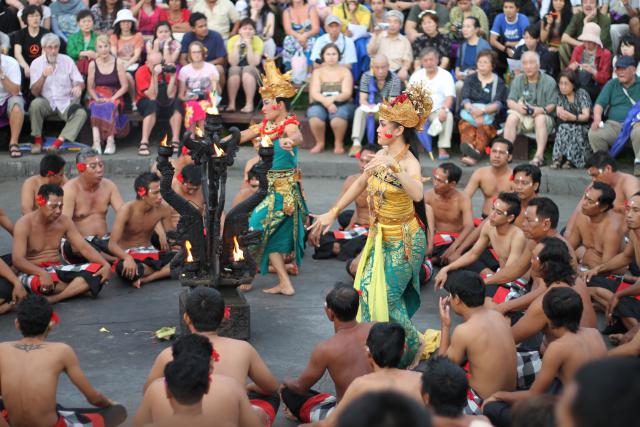
The dance consists of a circle of men who chant all of the "music" for the dance (visible in the shot second from the left above). They repeat a few sounds over and over, sometimes alternating sounds between different sections of the group. There are no musical instruments or spoken words to the story depicted in the dance, so the chanting provides the rhythm and marks the important events in the story.
At the end of the dance, they set up a bunch of piles of what I thought was shredded coconut husks and set them on fire, and the monkey character then gets to kick them around (as depicted in the shot to the far right). It wasn't quite what I expected when I was told we were going to a "fire dance" - I think I was thinking of something more Hawaiian with a guy twirling a flaming baton, but this was still entertaining and impressive.
For the dance (and whole trip), I was limited in the lenses I was able to use. I switched between the Canon EF 50mm f/1.8 II and my new Canon EF 100mm f/2.8L Macro IS USM. I wanted the wide apertures (f/1.8 and f/2.8) to help with faster shutter-speeds given the twilight and then dark conditions. Also during the dance, I switched to automatic ISO mode, to allow the camera to select higher ISOs to also allow for faster shutter-speeds. I found that I took a good deal of photos in a vertical orientation (see below) as a way to both capture more of the character's full costume as well as a way to eliminate clutter and unnecessary elements (ie: spectators). If you're interested in any of the specific technical data for any shots here, simply post a comment and I'll provide them.
I am not going to go into the roles of each character, but provide some photos of each. Above there is a photo with two characters who basically provided comic relief, and I swear the one looks like Predator! Others include the Monkey, a bird of some sort, and others (see below). The costumes were really interesting, and you can see my usage of the vertical format to be able to isolate a single character.
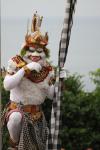 |
|
|
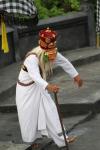 |
||
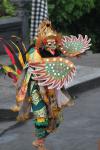 |
||
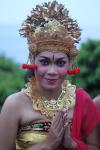 |
The last photo there - of the one female dancer - is Anya's favorite of this set. The wide aperture (f/1.8) on the 50mm lens used provides the nice soft background. Additionally, the vertical format allowed me to isolate the woman in the shot while she was flanked by tourists, all pushing to get their own photos alongside the performer.
Given the dim lighting and general disarray and constantly moving subjects, all of these shots came out fantastic. So remember the lessons here. Shorten your exposure time (faster shutter speed) as much as possible by (1) using as wide of an aperture as possible, (2) if your camera works well at high ISOs, switch to auto-ISO mode. Additionally, remember that sometimes the vertical format will help you to eliminate distracting elements from your photos, so rotate the camera and see what you can get.
- Bill
Indonesia: Sneak Peek (part 1)
ktuli — Thu, 01/27/2011 - 08:34
Ok - I don't know how many of these I will get around to posting (dive trips are always insanely busy vacations). So far, I've rattled off just under 3000 frames - granted, a large percentage of them will be culled, but it is still a lot of photos.
I'm six dives in with working with my 7D in the Ikelite housing, and I've been learning more and more each dive. I don't have an of those to share just yet, but for now, here's a couple shots...
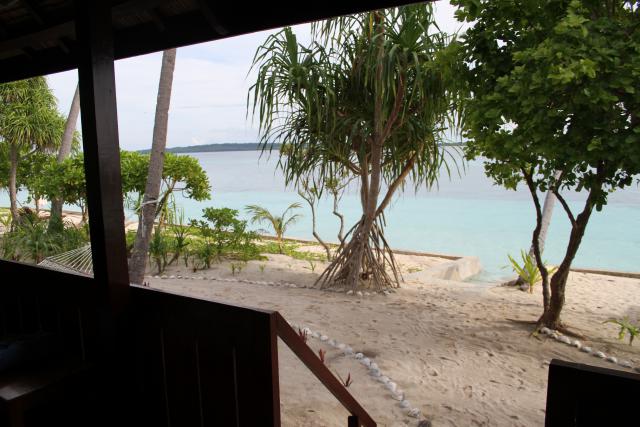
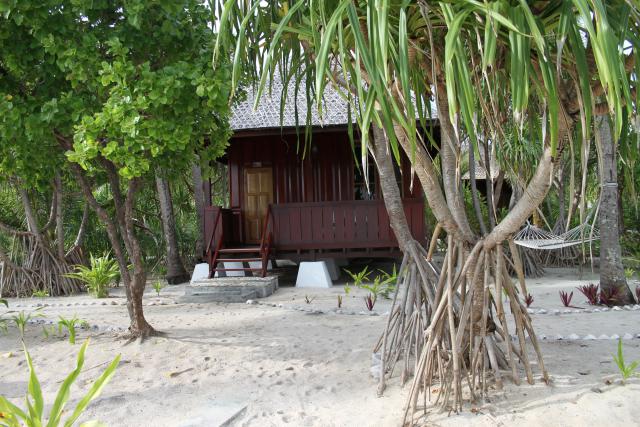
Enjoy!
- Bill
Horseshoe Falls & Light Rays
ktuli — Fri, 07/16/2010 - 18:09
I need another trip up to Niagara Falls. It has been almost three years since I was there last, and it has always been one of those places I've really liked - ever since I was a child. I remember going with my family when I was younger, and the most recent trip was made specifically to get engaged, so obviously it holds special meaning for me.
I know I just got back from vacation not too long ago, but I could use at least a quick weekend trip.
Technical Data: Canon EOS Digital Rebel XT, Canon EF-S 18-55mm f/3.5-5.6 II at 27mm, 1/320 sec at f/13, ISO 100. No post production. Niagara Falls, Ontario, Canada (yes, if you want to go to NF, it really is only worth going to the Canadian side).
Obviously, the main challenge with photographing Niagara Falls is to capture the power of the falls, and the awe inspiring nature of it, and the absolute grandeur of something that can't help but make you feel the overwhelming feeling that this world is shaped by forces far beyond our comprehension. Good luck... ;)
- Bill

